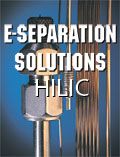Market Profile: Ion Chromatography
Ion chromatography (IC) is a similar technique to high performance liquid chromatography (HPLC) except that the detector of choice is usually a conductivity detector.
Ion chromatography (IC) is a similar technique to high performance liquid chromatography (HPLC) except that the detector of choice is usually a conductivity detector. IC is well suited for the analysis of a variety of inorganic and organic anions and cations. There is an additional dimension to an experiment using the technique as a result of the need to deal with changes in the ionic strength of the solution as the analyte materials are exchanged.

2011 worldwide IC industrial distribution
The US and Europe account for the majority of the total IC demand. Europe’s growth, in particular, is fueled by the RoHS initiative, which regulates the levels of lead, cadmium, mercury, hexavalent chromium, polybrominated biphenyl, and polybrominated diphenyl ether flame retardants in new electrical and electronic equipment.
Next-generation sequencers have been the latest breakthrough in the automated DNA sequencing market. With only a handful of vendors involved in next-generation sequencing, sequence-by-synthesis and sequence-by-ligation have emerged as the leading technologies.
The introduction of application-specific systems is another growth factor for the IC market. Many users are migrating to systems with eluent generation and regeneration technology. These systems make IC methods simple and reliable, as well as increase overall productivity. The use of IC with mass spectrometry is also becoming more common.
Generaland independent environmental testing laboratories account for 29% of the total demand. Asia continues to be a hotbed for growth, especially as the region adopts many of the environmental regulations and methods established in the US and Europe. In 2011, the chemicals industry accounted for 16% of the market and exhibits strong growth, particularly in petrochemical and biofuel applications. IC is a mature technique, but it is currently undergoing renewed interest from nontraditional industries. Industries involving life science applications are of growing importance to IC vendors. The pharmaceutical and agriculture–food and beverage industries are the next two largest users of IC with 14% and 12% of the 2011 market share, respectively.
The foregoing data were extracted and adapted from SDi's recently published Global Assessment Report, 12th Edition. For more information, contact Glenn Cudiamat, VP of Research Services, Strategic Directions International, Inc., 6242 Westchester Parkway, Suite 100, Los Angeles, CA 90045, (310) 641-4982, fax: (310) 641-8851, email: cudiamat@strategic-directions.com







